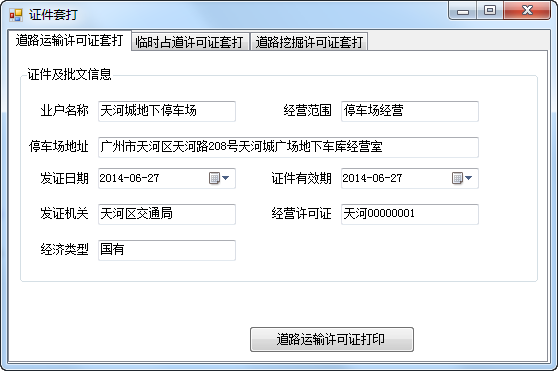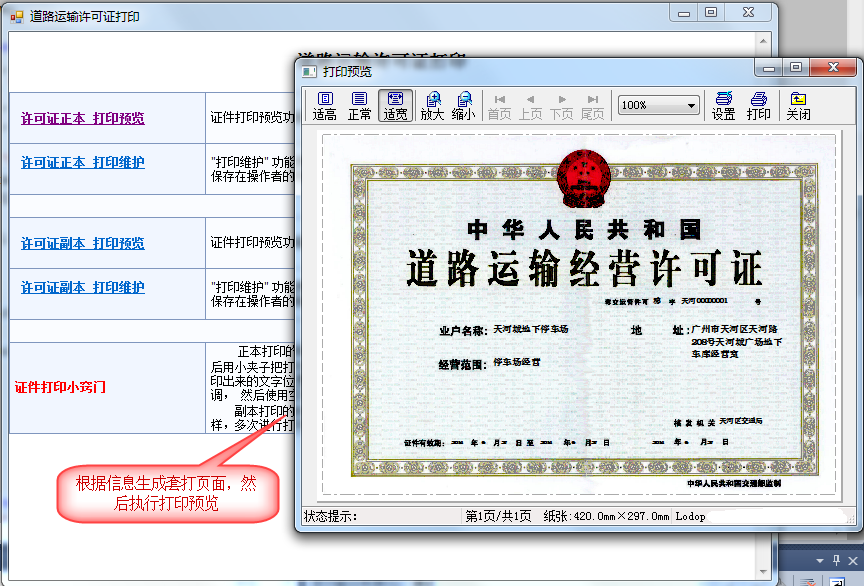使用NVelocity也有幾個年頭了,主要是在我的代碼生成工具Database2Sharp上使用來生成相關代碼的,不過NVelocity是一個非常不錯的模板引擎,可以用來生成文件、頁面等相關處理,非常高效和方便。
它原先是在網站http://nvelocity.sourceforge.net/ 上維護,不過從0.41後,該網站就不再進行NVelocity更新了,現在可以在網站http://nvelocity.codeplex.com/上獲得最新版本的更新,接著版本的更新操作,我們把NVelocity的幾種生成文件的操作介紹一下,以便大家進行更深入的了解。
我在早期幾篇文章也介紹過NVelocity的使用,主要介紹了NVelocity的語法和邏輯的和使用,還有就是如何在實際項目中進行的內容動態生成的操作,有興趣可以翻下下面幾篇文章:
強大的模板引擎開源軟件NVelocity
Database2Sharp版本更新之自定義模板生成
使用NVelocity0.5實現服務器端頁面自動生成
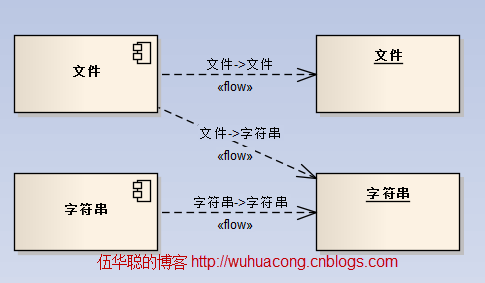
從上面的圖示,我們可以看到,NVelocity的模板化生成包含了3種方式,一種是從文件到文件或者字符串,一種是從字符串到字符串,他們各自的處理方式有所不同,但是都能正確解析裡面的內容。
為了更好利用NVelocity的特性,我們對它進行一個初步的輔助類封裝。
/// <summary>
/// 基於NVelocity的模板文件生成輔助類
/// </summary>
public class NVelocityHelper
{
protected VelocityContext context;
protected Template template;
protected string templateFile;
/// <summary>
/// 存放鍵值的字典內容
/// </summary>
private Dictionary<string, object> KeyObjDict = new Dictionary<string, object>();
/// <summary>
/// 添加一個鍵值對象
/// </summary>
/// <param name="key">鍵,不可重復</param>
/// <param name="value">值</param>
/// <returns></returns>
public NVelocityHelper AddKeyValue(string key, object value)
{
if (!KeyObjDict.ContainsKey(key))
{
KeyObjDict.Add(key, value);
}
return this;
}
................
上面的AddKeyValue方法,主要用來為模板引擎添加一些需要綁定在頁面上的變量對象,這樣頁面變量參數的內容就能正確解析出來了。
為了使用NVelocity的各種特性,我們需要在輔助類裡面構造模板的相關信息,設置相關參數。
/// <summary>
/// 初始化模板引擎
/// </summary>
protected virtual void InitTemplateEngine()
{
try
{
//Velocity.Init(NVELOCITY_PROPERTY);
VelocityEngine templateEngine = new VelocityEngine();
templateEngine.SetProperty(RuntimeConstants.RESOURCE_LOADER, "file");
templateEngine.SetProperty(RuntimeConstants.INPUT_ENCODING, "utf-8");
templateEngine.SetProperty(RuntimeConstants.OUTPUT_ENCODING, "utf-8");
//如果設置了FILE_RESOURCE_LOADER_PATH屬性,那麼模板文件的基礎路徑就是基於這個設置的目錄,否則默認當前運行目錄
templateEngine.SetProperty(RuntimeConstants.FILE_RESOURCE_LOADER_PATH, AppDomain.CurrentDomain.BaseDirectory);
templateEngine.Init();
template = templateEngine.GetTemplate(templateFile);
}
catch (ResourceNotFoundException re)
{
string error = string.Format("Cannot find template " + templateFile);
LogTextHelper.Error(error);
throw new Exception(error, re);
}
catch (ParseErrorException pee)
{
string error = string.Format("Syntax error in template " + templateFile + ":" + pee.StackTrace);
LogTextHelper.Error(error);
throw new Exception(error, pee);
}
}
在生成內容之前,需要把相關的對象屬性綁定到模板引擎的上下文對象裡面。
/// <summary>
/// 初始化上下文的內容
/// </summary>
private void InitContext()
{
context = new VelocityContext();
foreach (string key in KeyObjDict.Keys)
{
context.Put(key, KeyObjDict[key]);
}
}
1)根據模板文件構造對應的文件內容
/// <summary>
///根據模板創建輸出的文件,並返回生成的文件路徑
/// </summary>
public virtual string ExecuteFile()
{
string fileName = "";
if (template != null)
{
string filePath = CheckEndBySlash(directoryOfOutput);
fileName = filePath + fileNameOfOutput + fileExtension;
if (!string.IsNullOrEmpty(filePath) && !Directory.Exists(filePath))
{
Directory.CreateDirectory(filePath);
}
//LogTextHelper.Debug(string.Format("Class file output path:{0}", fileName));
InitContext();
using (StreamWriter writer = new StreamWriter(fileName, false))
{
template.Merge(context, writer);
}
}
return fileName;
}
2)根據模板文件構造字符串內容
/// <summary>
/// 根據模板輸出字符串內容
/// </summary>
/// <param name="templateFile"></param>
/// <returns></returns>
public string ExecuteString()
{
InitContext();
System.IO.StringWriter writer = new System.IO.StringWriter();
template.Merge(context, writer);
return writer.GetStringBuilder().ToString();
}
3)根據字符串內容構造字符串輸出
/// <summary>
/// 合並字符串的內容
/// </summary>
/// <returns></returns>
public string ExecuteMergeString(string inputString)
{
VelocityEngine templateEngine = new VelocityEngine();
templateEngine.Init();
InitContext();
System.IO.StringWriter writer = new System.IO.StringWriter();
templateEngine.Evaluate(context, writer, "mystring", inputString);
return writer.GetStringBuilder().ToString();
}
上面幾種操作模板輸出的方式,其調用代碼如下所示。
private void btnGenerateFile_Click(object sender, EventArgs e)
{
string tempalte = "Template/template.htm";//相對目錄
TestInfo info = new TestInfo();
info.Title = "測試標題";
info.Content = "測試內容,這是測試內容";
info.Datetime = DateTime.Now;
NVelocityHelper adapter = new NVelocityHelper(tempalte);
adapter.AddKeyValue("title", "This is a title")
.AddKeyValue("content", "This is a Content")
.AddKeyValue("datetime", System.DateTime.Now)
.AddKeyValue("TestInfo", info);
adapter.FileNameOfOutput = "testTemplate";
string filePath = adapter.ExecuteFile();
if (!string.IsNullOrEmpty(filePath))
{
Process.Start(filePath);
}
}
private void btnGenerate_Click(object sender, EventArgs e)
{
string tempalte = "Template/template.htm";//相對目錄
TestInfo info = new TestInfo();
info.Title = "測試標題";
info.Content = "測試內容,這是測試內容";
info.Datetime = DateTime.Now;
NVelocityHelper adapter = new NVelocityHelper(tempalte);
adapter.AddKeyValue("title", "This is a title")
.AddKeyValue("content", "This is a Content")
.AddKeyValue("datetime", System.DateTime.Now)
.AddKeyValue("TestInfo", info);
this.txtCode.Text = adapter.ExecuteString();
}
private void btnMergeString_Click(object sender, EventArgs e)
{
System.Text.StringBuilder builder = new System.Text.StringBuilder();
builder.Append(
"${Title}\r\n" +
"$Content\r\n" +
"$Digest\r\n" +
"$Author\r\n" +
"$Keyword\r\n" +
"$DateTime\r\n");
NVelocityHelper adapter = new NVelocityHelper();
adapter.AddKeyValue("Title", "標題").
AddKeyValue("Content", "內容").
AddKeyValue("Digest", "摘要").
AddKeyValue("Author", "作者").
AddKeyValue("Keyword", "關鍵詞").
AddKeyValue("DateTime", DateTime.Now);
this.txtCode.Text = adapter.ExecuteMergeString(builder.ToString());
}
上面的幾種操作模板內容的方式,能夠在絕大多數情況下滿足我們的應用要求,如可以在代碼生成工具裡面,定義一些自定義的內容模板,然後結合數據庫的元數據信息,實現豐富邏輯的代碼生成操作。
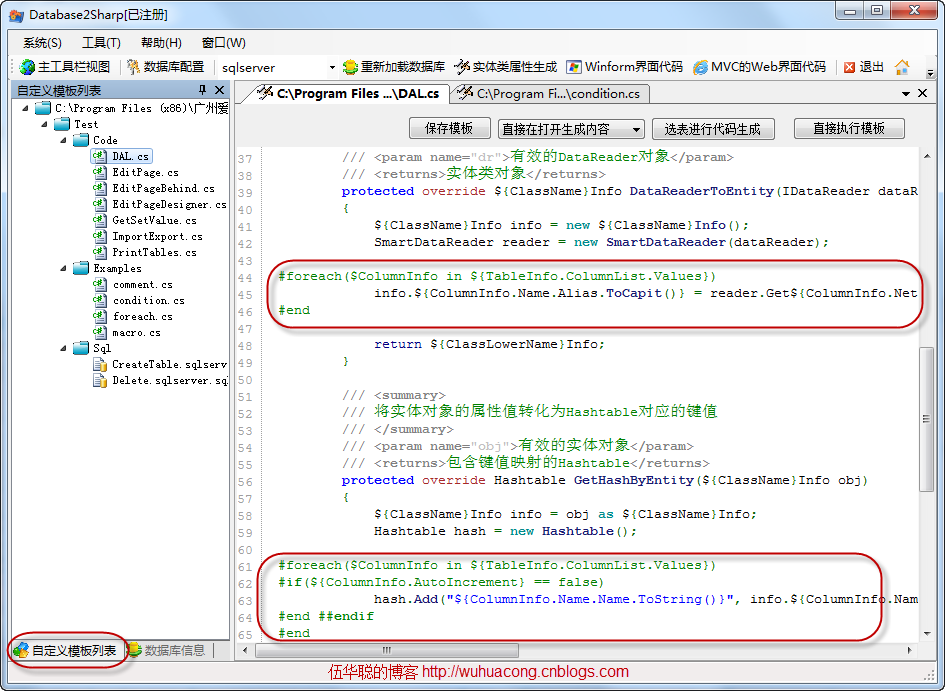
也可以在一些內容管理的應用上(如文章管理方面),根據輸入的內容,實現文章內容的文件生成操作,這個生成後,我們就直接使用文章的文件鏈接地址就可以了。
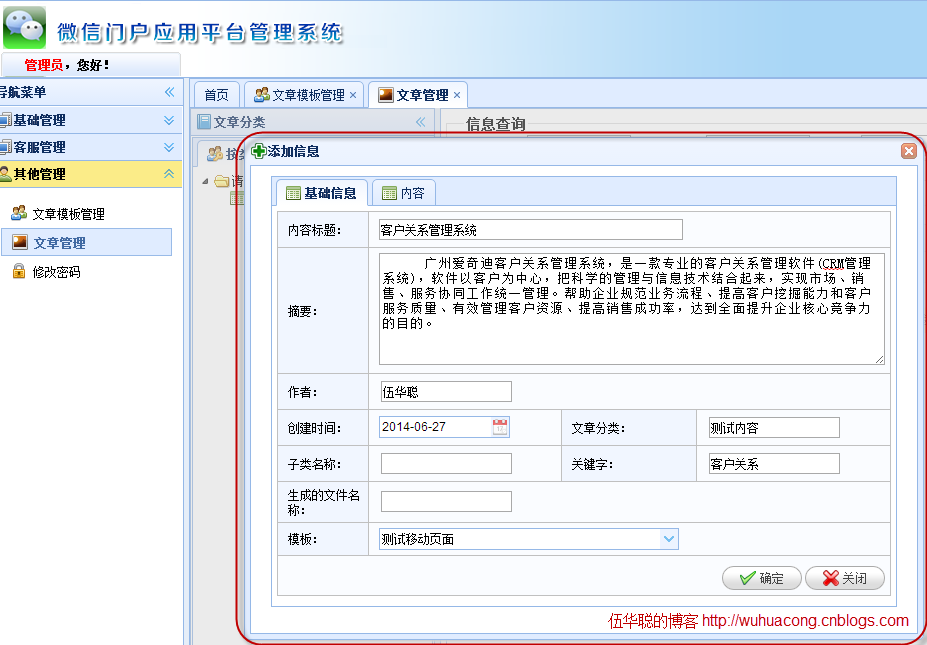
或者根據數據信息生成具體的頁面,用於套打操作,如下是Winform裡面的套打處理。
